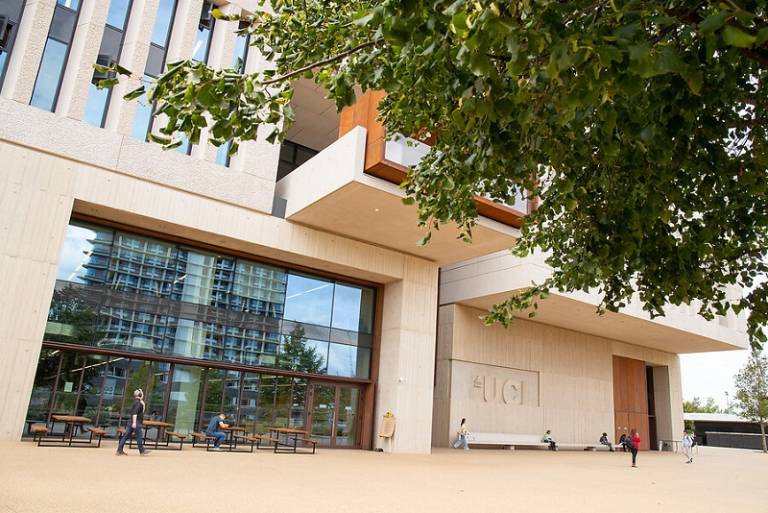Marshgate
An outstanding site for learning and research, built to help find answers to the challenges of the future. Marshgate is UCL's single largest building.

14 February 2024
UCL tackling the biggest challenges facing people
A venue where students, researchers, and members of the public can collaborate and learn from one another. The building hosts courses for a range of subject areas, from the creative industries to engineering, robotics, green technologies and global health. Students can explore the potential of robotics, artificial intelligence, and biophilic design on any subject area from finance to fine art.
Impact



Marshgate's 'vertical neighbourhoods' set the stage for public meetings, informal collaboration, and laboratory work.
Marshgate offers eight floors of open and adaptable teaching, research and collaboration spaces. Different floors are clustered into a series of ‘neighbourhoods’, each with its own double-height collaboration space for informal meetings or exhibitions. The lower levels of the building include a network of publicly accessible spaces, with a café, public art displays and activities designed to draw schools, community organisations and the public into the life and heart of the building. While public amenities predominantly populate the ground level, student, academic and research spaces are concentrated on the central floors, and highly specialised laboratories and workshops are primarily situated on the building’s upper levels.
A central, day-lit atrium vertically connects all the building’s activities, and highly visible circulation routes including stairs and escalators create further opportunities for chance encounters and interaction. Marshgate has fabrication workshops, media studios, exhibition areas, design studios, lecture theatres, a library, an executive suite, and spaces for collaboration and engagement. These have been created not only for teaching, research, and coursework but to host local businesses and communities. The BREEAM 'Excellent' rated building marries a strong and enduring identity with a highly flexible and long-life design.
Sustainability, Access, and Inclusion
Built to a high standard of efficiency, Marshgate uses sustainable techniques to ensure an efficient, insulated, safe building. The building's mass delivers high thermal performance combined with natural and mechanical ventilation to minimise the requirement of heating and cooling systems. This reduces the energy required to run the building over its lifetime. The distinctive deep-set vertical windows let in lots of natural light, while keeping out heat and direct light glare. These windows can be opened remotely to let in fresh air or let out heat as required.
During construction, approaches used to lower greenhouse gas emissions from construction and transport at previous UCL projects were used to ensure Marshgate was built with the lightest impact on the planet, including local park life. The large quantity of concrete ensures that internal temperatures stay cool and comfortable in winter or summer. The use of blast-furnace waste in cement means we used 50% less raw material in the cement, while getting a superior material that is resistant to quick temperature change.
This approach means that the building has a lower carbon-footprint compared to buildings of an equivalent size. This includes for greenhouse gases during construction and across the life of the building.
 Close
Close

